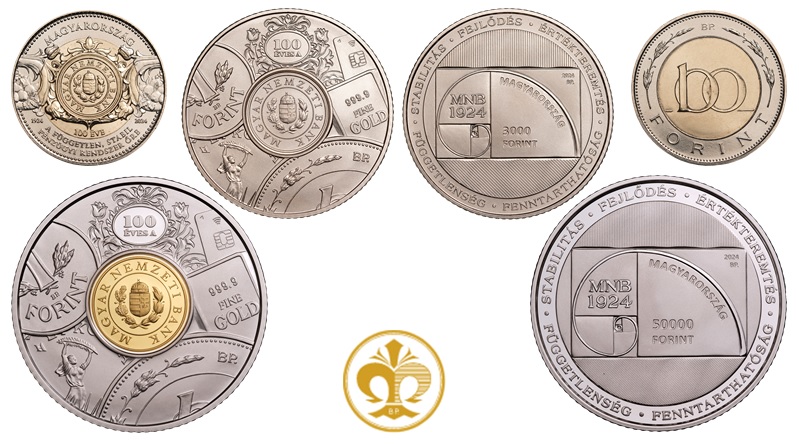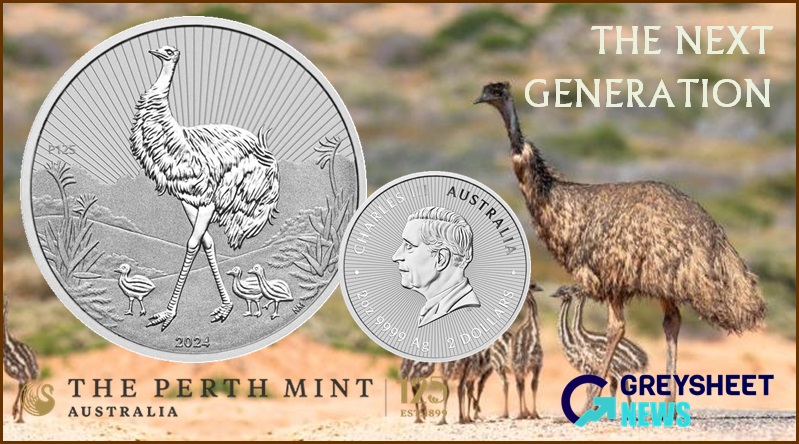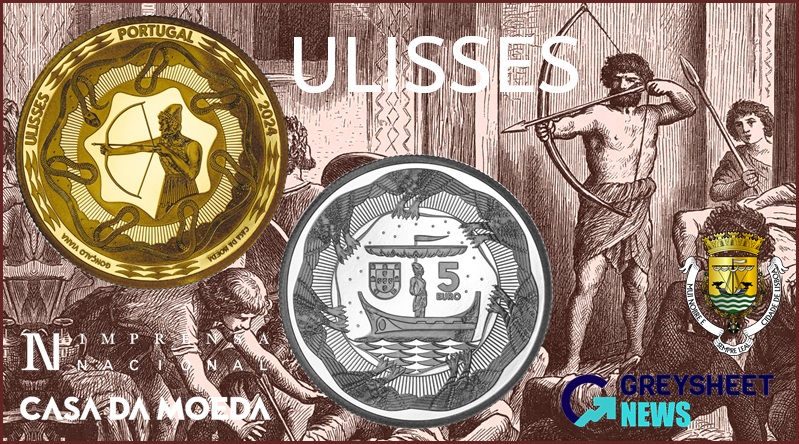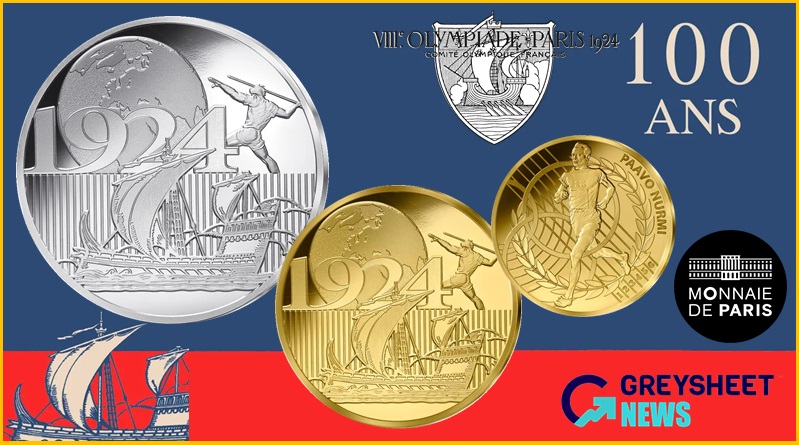Hungary: National Bank’s Centenary Anniversary Is Celebrated With Release Of Largest-ever Silver Proof Coins
The National Bank of Hungary have released new commemorative coins which mark the centennial anniversary of their founding.
The foundation of an independent Hungarian central bank was one of the momentous symbols of sovereignty and autonomy sought from the Austrian Empire. The efforts for its foundation had been reflected in the 12 points summarising the demands put forth to Vienna and the Emperor as far back as the Hungarian revolution of 1848. The first independent Hungarian government that was established entrusted the tasks of central banking to the Pesti Magyar Kereskedelmi Bank or, the Hungarian Commercial Bank of Pest. However, in October 1918 and as a result of the First World War, the Austro-Hungarian Monarchy was dissolved along with the Austro-Hungarian Central Bank. The role of a central bank was taken over by the Royal Hungarian State Bank Institute, which was established on the 11th July 1921.
On the 24th June 1924 the Hungarian National Bank was formally established as a joint-stock company with Sándor Popovics appointed as the bank’s first president. The new national bank was tasked with the stabilisation of the Hungarian koruna which had become inflated after the First World War. Ultimately, a new currency, the Pengo was introduced in place of the koruna in 1927 and to stabilise its value, the supervision of foreign exchange management also came under the governance of the National Bank. Eventually, the Stock Market crash and financial crisis of Wall Street in 1929 caused a global economic crisis that reached Hungary in July 1931. An economic depression, together with the effects of the Second World War caused hyper-inflation of the national currency, the pengő. After the end of the war, the devaluation of the pengő produced the largest currency depreciation in world history. Economic stabilisation was ultimately achieved by August 1946 which at this time, the pengo was replaced with the Hungarian Forint. Hungarian democracy was defeated at the end of the Second World War and was replaced with a one-party socialist government. As a result, the nationalisation of industry and property meant the liquidation of commercial and saving banks. The National Bank was also nationalised at the end of 1947 and from that time, the Magyar Nemzeti Bank performed limited commercial and central banking tasks. As a nationalized central bank, its management came under the authority of the government. Their status as an independent financial authority was not reversed until the collapse of the Socialist government in 1987 and an independent two-tiered banking system was restored in Hungary. More recently and with Hungary's accession to the European Union, the National Bank became a member of the European System of Central Banks in 2004 and the exchange rate of the forint against the euro as a reference currency has been floating freely since February 2008.
The silver and base metal commemorative coins are produced by the Mint of Hungary at their facilities in Budapest on behalf of the Hungarian National Bank.

100 Forint – Designed by sculptor Zoltán Kovács, these coins are identical with the 100-forint coins currently in circulation. Depicted on the obverse is the current logo of the Magyar Nemzeti Bank surrounded by a detail of the motif borrowed from the decorative frame on the stock shares issued by the MNB in 1924. The primary motif is surrounded with a border of pearls which runs along the outer ring interrupted by the commemorative inscription MAGYARORSZÁG (Hungary) placed above the logo of the National Bank while the remaining inscription 100 ÉVE A FÜGGETLEN, STABIL PÉNZÜGYI RENDSZER ŐRE’ (safeguarding the independent, stable financial system for 100 years) is placed below. The commemorative years 1924 indicating the foundation of the Magyar Nemzeti Bank along with the mint year 2024 which appears just below the scroll work. The reverse side is the same as the currently circulating 100 forint denomination that features the numeral 100 centred with the word FORINT placed below.
3,000 & 50,000 Forint – Designed by applied artist Andrea Horváth, both denominations share the same theme and motif. The obverse side features as it’s centred focus is the Magyar Nemzeti Bank’s logo as a gold inlay on the silver coin, and shown as a relief on the base metal version surrounded by a circular line. Above the logo are elements and details recreated from the decorative engraving depicted on the original share certificates issued by the Bank in 1924 along with the inscription 100 ÉVES A (100 years of) within an oval shape. To the right of the logo, methods of commerce are represented beginning with a bank card, the symbol of electronic transactions and clockwise, a gold bar referencing the gold reserves supporting Hungary’s reserves. There are details of the 100-forint circulation coin currently in circulation, the 10 forint circulation coin in use from 1971 to 1987 and the 1 forint circulation coin issued in 1946.
The reverse side features in the centre field a Fibonacci or, golden spiral symbolising progress and growth and is shown as a relief with squares in the background surrounded by a circular line representing the Hungarian flag which is replicated by heraldic horizontal stripes. At the focal point of the spiral is the inscription MNB and the year 1924 which refers to the Bank’s foundation. The most significant objectives defining the Bank’s operation are featured around the rim with the inscription STABILITÁS • FEJLŐDÉS • ÉRTÉKTEREMTÉS (Stability • Development • Value Creation) along the upper rim. Below and along the lower rim is the additional text FÜGGETLENSÉG • FENNTARTHATÓSÁG (Independence • Sustainability). The text MAGYARORSZÁG (Hungary) appears below the spiral, following its curve along with the coins’ denomination of 50,000 FORINT (silver) or 3,000 FORINT (Base metal).
With a weight of 100 grams, this silver collector coin stands out as the heaviest precious metal coin in the history of Hungarian collector coin issuance.
| Denomination | Metal | Weight | Diameter | Quality | Maximum Mintage |
| 100 Forint | Bi-metallic | 8.6 g. | 23.8 mm. | Select BU | 12,000 |
| 3,000 Forint | Cupro-nickel | 30 g. | 38.6 mm. | BU | 8,000 |
| 50,000 Forint | .925 Silver | 100 g. | 60 mm. | Proof & Plating | 6,000 |
Available from the 24th May, the BU strikes of the 100 Forint coin are presented in a folder including informative text and illustrations pertaining to the centenary anniversary with a serial numbered packaging. The silver commemorative 50,000 Forint proof coins are encapsulated and presented in specially prepared custom cases accompanied with a numbered certificate of authenticity. The BU quality base metal coins are encapsulated and available to purchase for their face value.

Download the Greysheet app for access to pricing, news, events and your subscriptions.
Subscribe Now.

Subscribe to CPG® Coin & Currency Market Review for the industry's most respected pricing and to read more articles just like this.
Author: Michael Alexander












Please sign in or register to leave a comment.
Your identity will be restricted to first name/last initial, or a user ID you create.
Comment
Comments